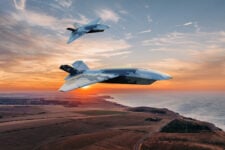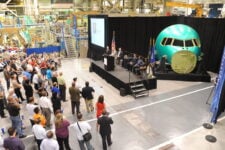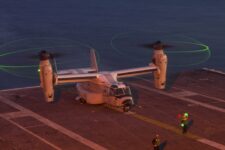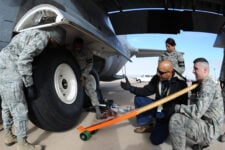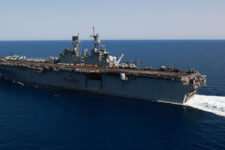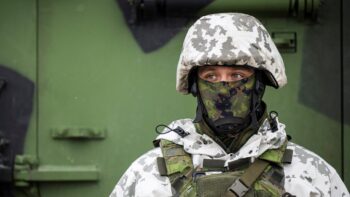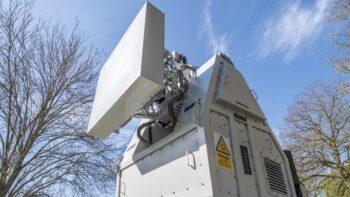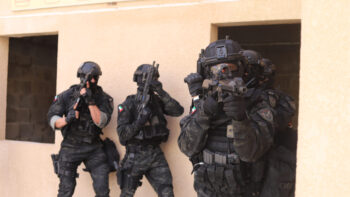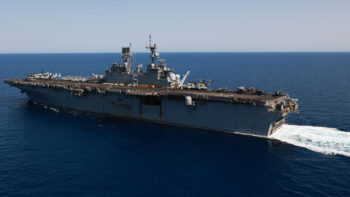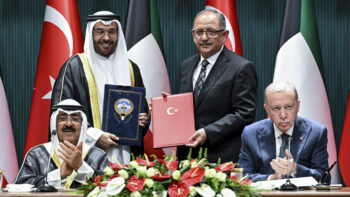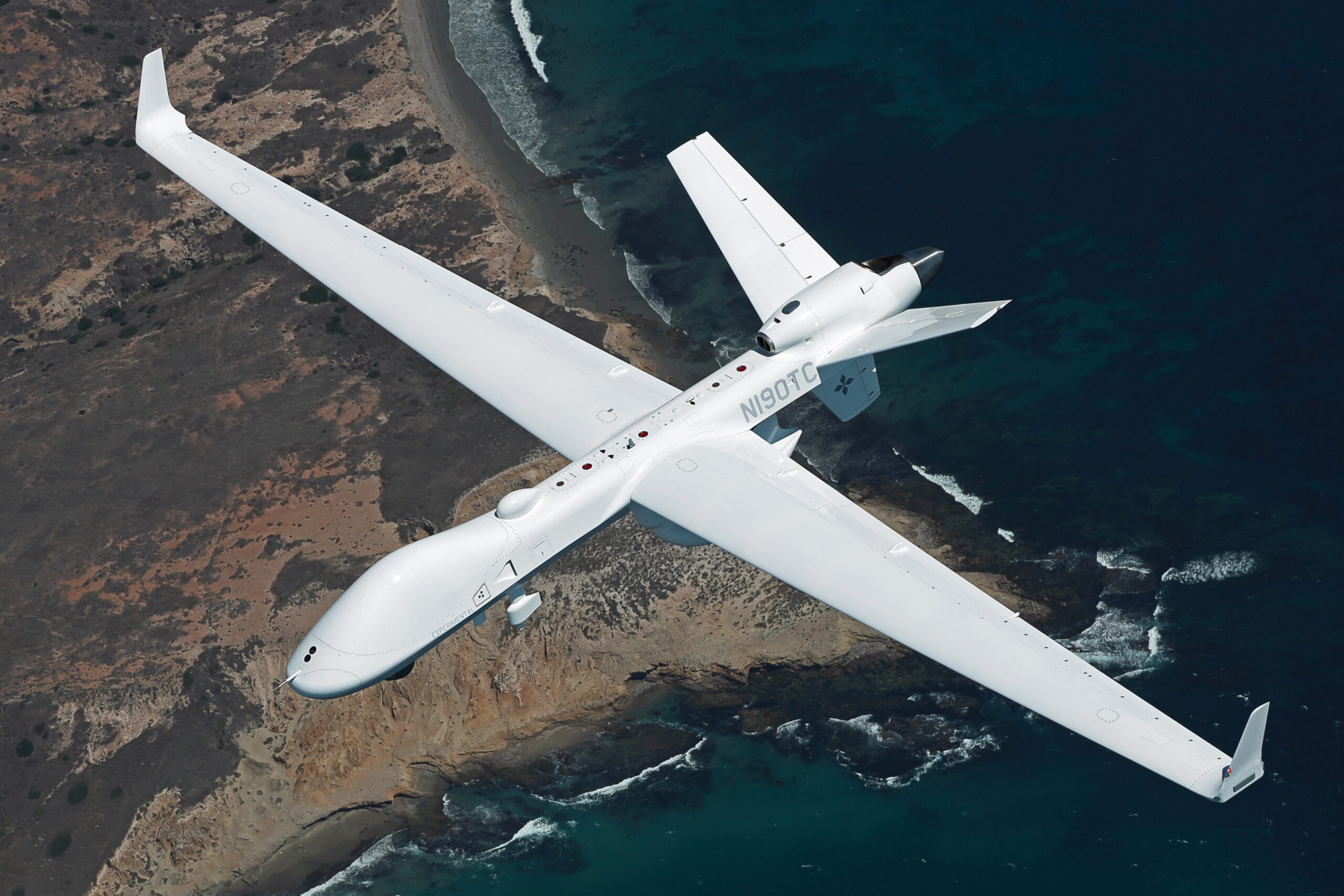
GA-ASI’s MQ-9B Remotely Piloted Aircraft.
In a world that seems to grow more dangerous by the day, responsible nations need all the help they can get to preserve order and safety. That means the capability to act, and before that, the ability to know.
Intelligence, surveillance, and reconnaissance is the foundation for security. And even though today’s challenges aren’t getting any fewer in number or simpler in nature, the tools for addressing them are advancing ahead of need.
One key example is the MQ-9B SeaGuardian®, a medium-altitude, long-endurance remotely piloted aircraft (RPA) system built by General Atomics Aeronautical Systems, Inc. (GA-ASI). It offers everything an advanced nation such as the United Arab Emirates needs in a platform of this kind for work in every domain.
The aircraft can fly for a long time—as many as 40 hours, in some configurations—while collecting very high-quality intelligence, surveillance, and reconnaissance over land, over coastlines, or over open ocean. It’s the only aircraft of its kind that also can search under the sea. MQ-9B can move seamlessly from one operation to another on the same mission, if necessary. It’s incredibly flexible, but it’s also incredibly capable.
Superior design
Part of the reason is the aircraft’s design – it’s lightweight with a long wingspan, so it uses fuel very efficiently. With no people on board, SeaGuardian can leverage its volume to maximum productivity. Remote operation also means pilots are not vulnerable to fatigue or other dangerous conditions. Crews work from a ground control station. They can be sited anywhere and connect to the airplane via satellite link. When one set of pilots and crew finish a shift, another group can come in and take over.
Working in this way means taking maximum advantage of pilots and crews while also giving them a sustainable long-term duty cycle. And with more than one aircraft in operation, working in teams, it means that intelligence officials, or a coast guard agency, or other users can effectively watch a location nonstop. Nothing can happen in a section of ocean, or in a key waterway, without being seen.
If it can be seen, it can be acted upon. Imagine a ship in distress. With MQ-9B, there’s no need to conduct a search because it’s already there. The aircraft can see precisely where the ship is and immediately assess its condition. Is it on fire? Are there lifeboats? Simply put, MQ-9B takes the “search” out of “search and rescue” and helps speed the “rescue.” The coast guard can send a rescue helicopter right over to the point of distress for immediate response.
This has already been borne out in the real world and applies in any number of other use cases.
International demand
Examples include several successful exercises with the United States Navy in which MQ-9B took part in fleet exercises such as escort, communications relay, and anti-submarine warfare. The aircraft’s extensive capabilities mean it’s in high demand elsewhere around the world too.
The U.S. Air Force Special Operations Command is flying MQ-9B to develop advanced new concepts for unmanned systems. In the United Kingdom, the Royal Air Force has received its first aircraft, with others set to arrive in short order. SeaGuardian is helping the Japan Coast Guard transform maritime domain awareness over Japanese waters. Another very important customer is India, and more countries, like the UAE, are expressing interest because MQ-9B delivers sustained actionable intelligence.
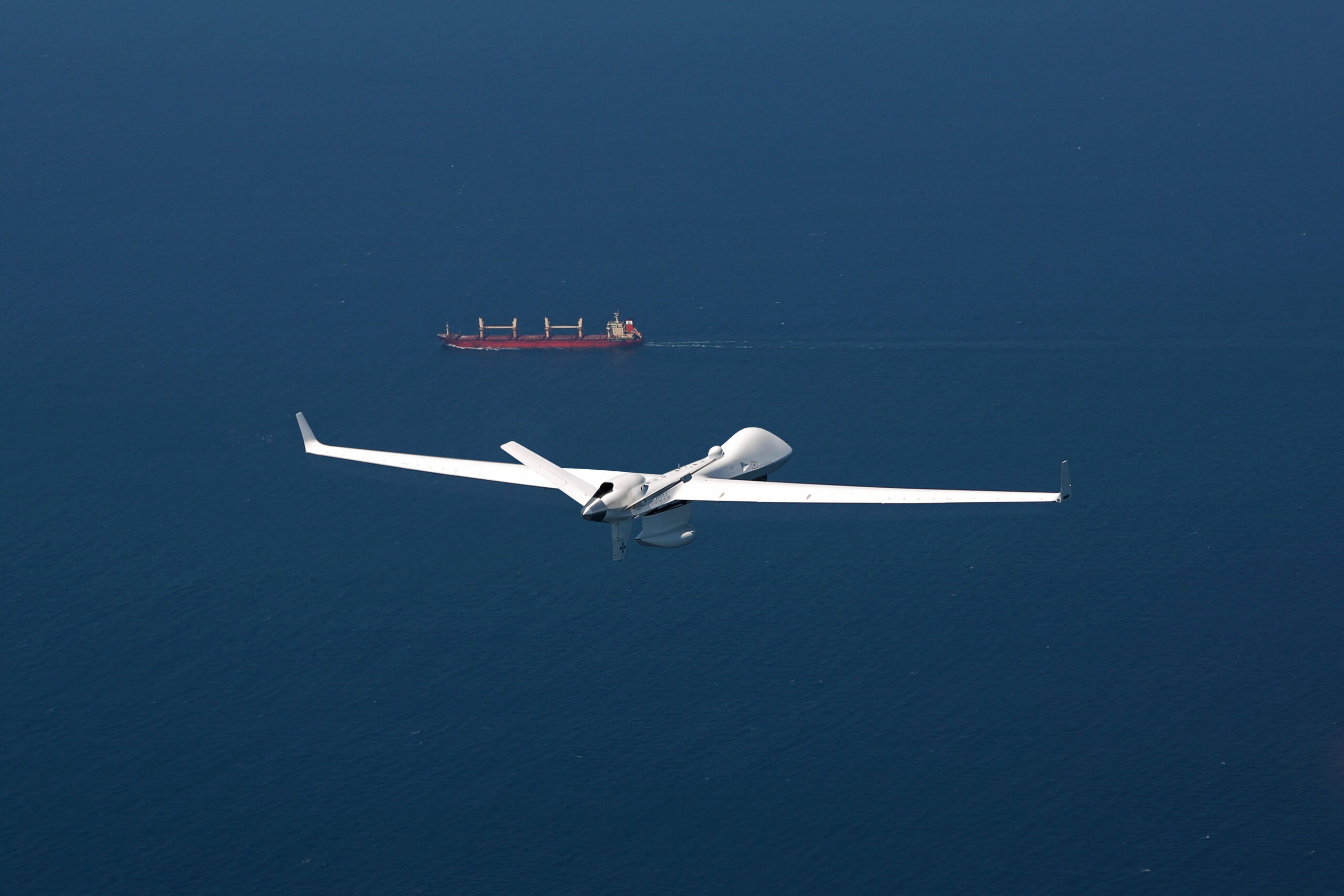
Equipped with powerful sensors, GA-ASI’s long-endurance MQ-9B SeaGuardian captures critical ISR data, 24/7.
SeaGuardian has an electro-optical sensor in the nose that delivers very high-quality video pictures, day or night. It also has a multi-mode radar that offers additional ways to sense and observe what’s below.
Inverse synthetic aperture radar, for example, provides a very detailed look in three dimensions of the hypothetical vessel on the surface in the notional search and rescue example. Or MQ-9B can make maps on land of any area of interest or reveal long routes below the aircraft, such as roads or railroads. Change detection lets the aircraft see how patterns below have altered over time. For example, it can note the presence of tire tracks through sand that weren’t there before.
SeaGuardian also takes aboard any number of specialized payloads depending on the requirements of the mission. These payloads could enhance communications. They could enhance sensing. With so many payload options, the aircraft can be easily tailored to take on many different roles.
In the case of the UAE, General Atomics Aeronautical Systems is working with EDGE to be sure that the UAE’s aircraft are able to take on board the weapons that the UAE government requires for its missions. The integration work underway now is an historic advancement in U.S. and UAE defense cooperation.
This partnership on aircraft payloads is only the latest example of a longstanding relationship between the United States and the UAE in which General Atomics has had the privilege to make a contribution.
The UAE has been flying the Predator XP remotely piloted aircraft for many years, and General Atomics’ commitments to the UAE go beyond the long-term support it’s planning for additional aircraft systems. Additional projects planned in the UAE span the most important areas of technological development, including aircraft from GA-ASI as well as next-generation advanced materials and energy solutions from its sister divisions.
The need—and urgency—for collaborations like these have never been more obvious. That’s why it’s so important for the United States, the UAE, and General Atomics to continue working together to preserve peace and stability in the Arabian Gulf region and beyond.
